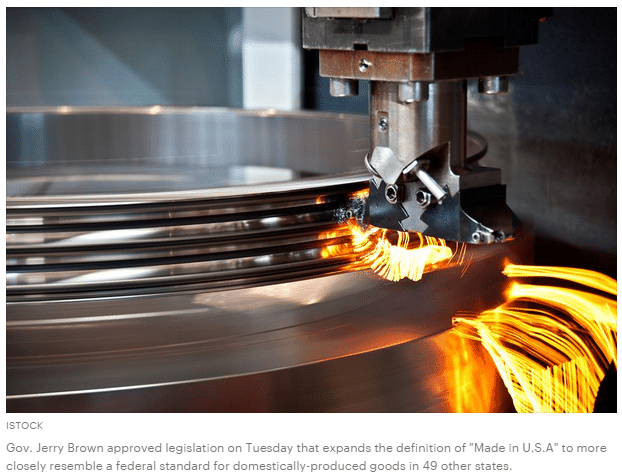The End of Outsourcing?
“The advantages of reversing low-cost supply chain strategies and embracing nearsourcing are many, including: no time-zone differences or lag time that prevents real-time communication and collaboration, fewer language and cultural barriers, lower business traveling costs to plan and oversee projects and work, shorter time to market in the case of manufacturing and reduced inventory holdings because of shortened transit times. Nearsourcing also supports the increased focus by firms on the importance of customer accommodation and fulfillment in order to achieve a strategic competitive advantage. Ultimately, a well-run, shortened supply chain is in large part dependent upon a firm’s logistical expertise.”
|
American manufacturers that have moved operations to countries such as China and India have found themselves in for some rude awakenings, according to Jack Stack of The New York Times.“These countries usually require importers to pay for their goods up front and wait 90 days for the product. It also takes about 90 days to receive payment once an importer sells its product to a retailer. By the time the retailer sells the product and remits payment to the importer, it may take nine months or longer for a business to receive payment for outsourced goods. On the other hand, domestic manufacturers usually produce goods first and allow the client 60 days to remit payment. Thus, the company using nearsourcing receives an interest-free loan and payment from customers right about the time it pays the manufacturer.”
|
In its report, Drewry notes that after speaking to many shippers, the anecdotal evidence points to a significant increase in nearsourcing. “The trend is escalating for reasons that are easy to understand. Retailers need to offer more ‘made to measure’ goods that can be delivered to market a lot faster than from Asia. For example, a car or computer with a limited range of options doesn’t sell as well as models that can be sourced from closer to home with a wider range of cheap extras.”
American manufacturers and retailers are getting the message about the benefits of nearsourcing. U.S. retailers, in particular, are finding that they need to decrease cycle times, making it easier to constantly refresh merchandise. This keeps customers coming back into the store more often because they’re afraid of missing out on a new product.
Retailers from Target to The Children’s Place have discovered the advantages of nearsourcing. And in January of this year, Wal-Mart announced that it is increasing the sourcing of U.S. products by $50 billion over the next 10 years, hoping to boost U.S. manufacturing and jobs.
Manufacturers are also being reminded that U.S. labor is very flexible with a wide range of technical skills. This is accentuated by America being by far the choice destination of highly skilled immigrants. We must remember that legal immigration has always been essential to keeping America strong and vibrant. Attracting the world’s best talent must remain an important component of our economic growth strategy.
America is finding its sea legs when it comes to restoring our economy by boosting domestic manufacturing. A survey of 750 senior business executives worldwide, conducted in late 2012 by Ernst & Young, showed the number of executives that plan to nearsource previously outsourced activities will more than double in the next three years, from 14 percent to 35 percent.
For the American economy to recover and create jobs for 26 million unemployed or under-employed Americans, we all need to pull together. And that means U.S. manufacturers must demonstrate a commitment of reducing outsourcing and adopting nearshoring approaches to their businesses. There still is no stronger seal of approval throughout the world than when a product can proudly carry the stamp: Made in America.








Leave a Reply
Want to join the discussion?Feel free to contribute!